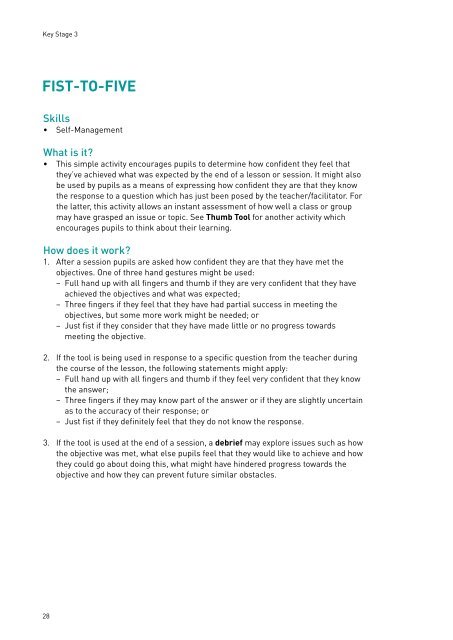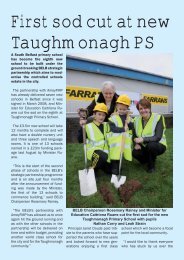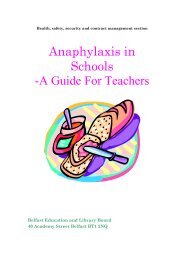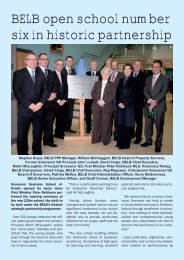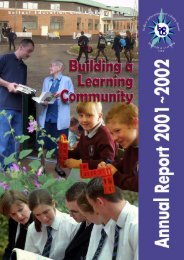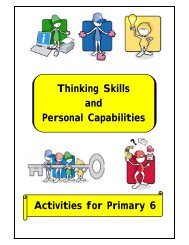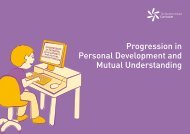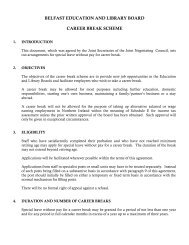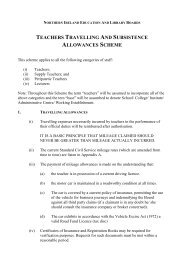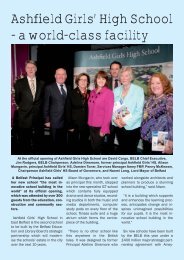Active Learning and Teaching Methods for Key Stage 3 - Northern ...
Active Learning and Teaching Methods for Key Stage 3 - Northern ...
Active Learning and Teaching Methods for Key Stage 3 - Northern ...
You also want an ePaper? Increase the reach of your titles
YUMPU automatically turns print PDFs into web optimized ePapers that Google loves.
<strong>Key</strong> <strong>Stage</strong> 3FIST-TO-FIVESkills• Self-ManagementWhat is it?• This simple activity encourages pupils to determine how confident they feel thatthey’ve achieved what was expected by the end of a lesson or session. It might alsobe used by pupils as a means of expressing how confident they are that they knowthe response to a question which has just been posed by the teacher/facilitator. Forthe latter, this activity allows an instant assessment of how well a class or groupmay have grasped an issue or topic. See Thumb Tool <strong>for</strong> another activity whichencourages pupils to think about their learning.How does it work?1. After a session pupils are asked how confident they are that they have met theobjectives. One of three h<strong>and</strong> gestures might be used:– Full h<strong>and</strong> up with all fingers <strong>and</strong> thumb if they are very confident that they haveachieved the objectives <strong>and</strong> what was expected;– Three fingers if they feel that they have had partial success in meeting theobjectives, but some more work might be needed; or– Just fist if they consider that they have made little or no progress towardsmeeting the objective.2. If the tool is being used in response to a specific question from the teacher duringthe course of the lesson, the following statements might apply:– Full h<strong>and</strong> up with all fingers <strong>and</strong> thumb if they feel very confident that they knowthe answer;– Three fingers if they may know part of the answer or if they are slightly uncertainas to the accuracy of their response; or– Just fist if they definitely feel that they do not know the response.3. If the tool is used at the end of a session, a debrief may explore issues such as howthe objective was met, what else pupils feel that they would like to achieve <strong>and</strong> howthey could go about doing this, what might have hindered progress towards theobjective <strong>and</strong> how they can prevent future similar obstacles.28


